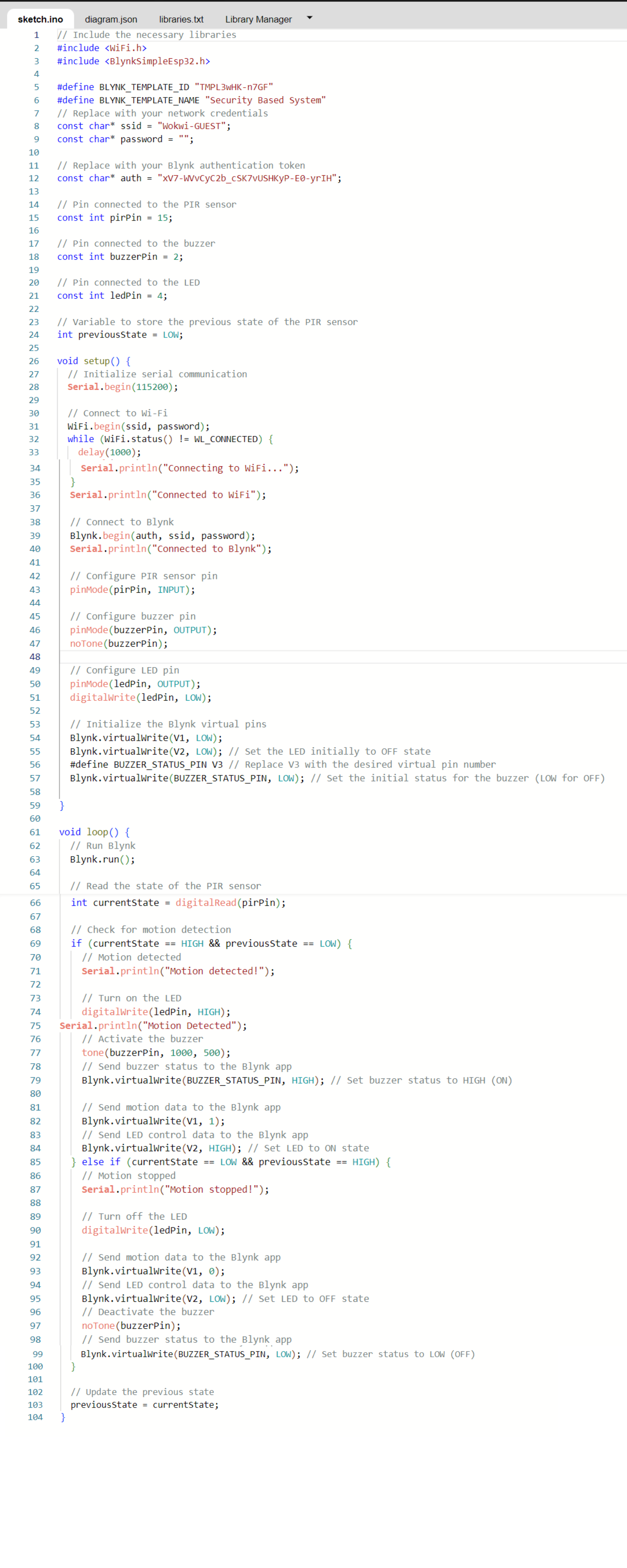
Project - Anti-Theft System
The project is based on the principles of IOT and my learnings from the recent Summer Steam Workshop. The project is made on the website WOKWI, ( A website for development and simulation for the projects ) and the data sent over BLYNK IOT for monitoring.
Problem ( The problem the project solves ) -
In today's world, when technology is getting advanced day-by-day, so are crimes increasing day-by-day. Criminals have taken advantage of the advanced technology which have made commiting a crime much more easier. Anyone in the mid would want to have security and prevention from such people, thus the need for innovation for such a system was required. Through innovation, research and experiments, we have now created an anti-theft system which turns the tables i.e. criminals using technology for thefts turns into we using technology for safety. Here is a little brief of my project from whatever mentioned here:
A brief about My Project :
The project is a part of Security Based System. The project is an Anti-Theft System which uses a PIR Sensor, Buzzer, LED, ESP32 for Micro-Controller and Blynk IOT. PIR Sensor is used for detecting Motion. When any object comes within the range of PIR Sensor and creates movement, The PIR sensor would surely detect it and send input to the buzzer and LED. This would only happen if there is any motion detected. After sending input, the LED would turn ON and Buzzer would produce a sound to showcase the output. Now, the big questions is, that how would it help in anti0theft system ? Well, let me explain.
I told earlier that PIR sensor is there for motion detection, that means the motion detection would be used for the thief when he/she comes near the range of the sensor. If, it might be the case, the thief comes in the range of the PIR Sensor, and moves, the sensor would detect that there is motion in its range and would send the input to the buzzer & LED respectively for them to thier job i.e. The Buzzer to produce an alarm/ring and the LED to turn Off. This is a effective method for reducing the number of crimes. Still, there is room for innovation. We could add feature that as soon as the alarm goes off, it would automatically call the police.
Tools used in the Project :
The following tools are used in my project -
1) PIR Sensor - Motion Detection
2) Buzzer - Alarm Alert
3) LED - Detection with Light
4) ESP32 - Micro Controller
5) Breadboard - Required for Connections
6) Wires
Working Of The Project:
- To make it work, click on the simulation button
PICTURES & VIDEOS -
Image -

Code -
LINK - CODE
PNG -

PROJECT DEVELOPER - Mananya Jain
THE END